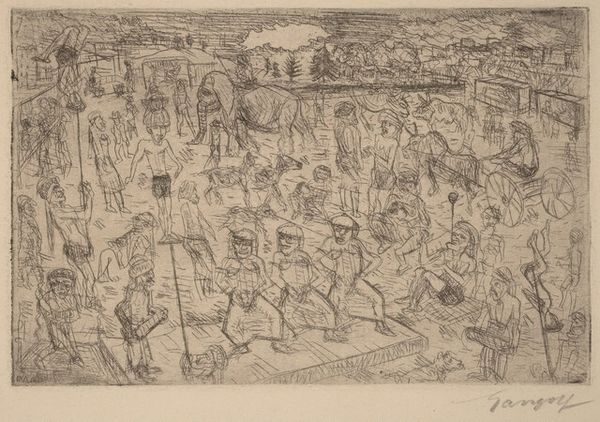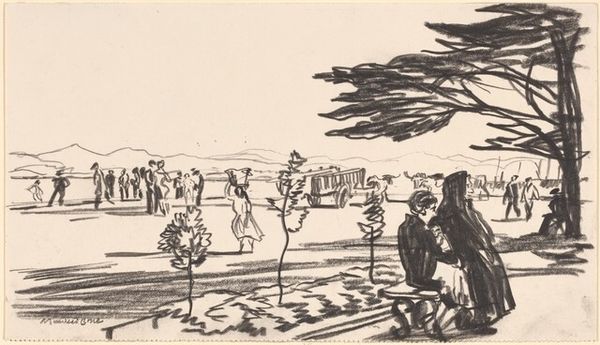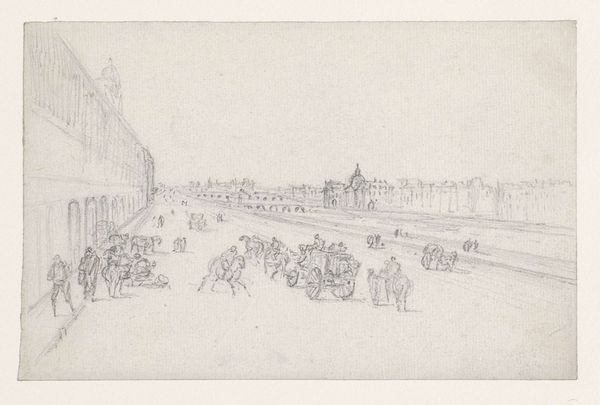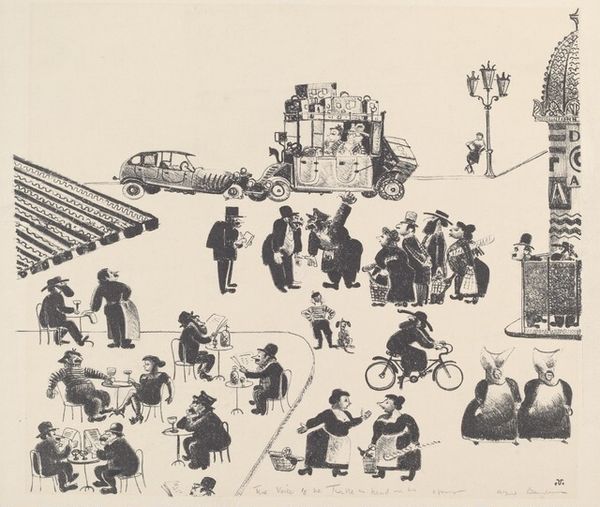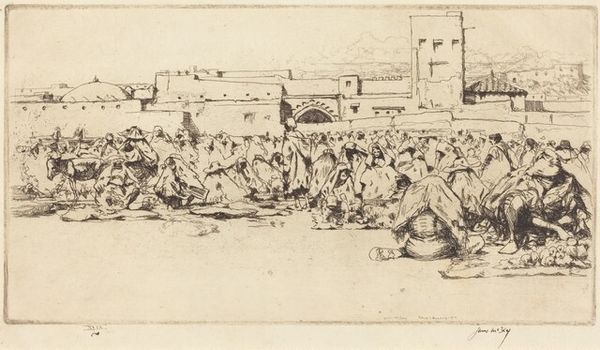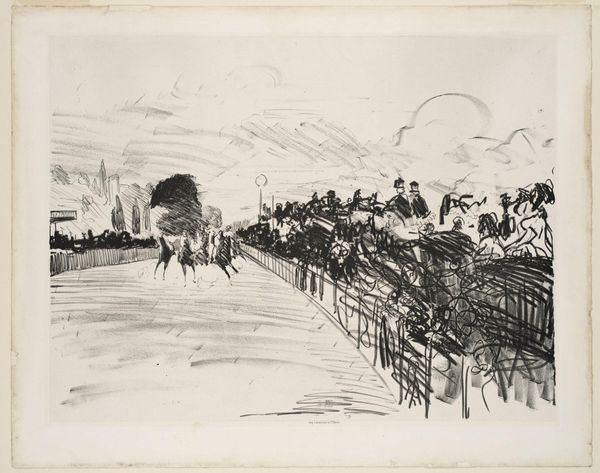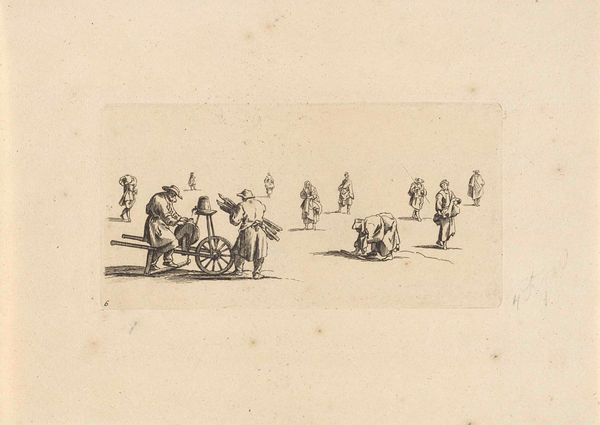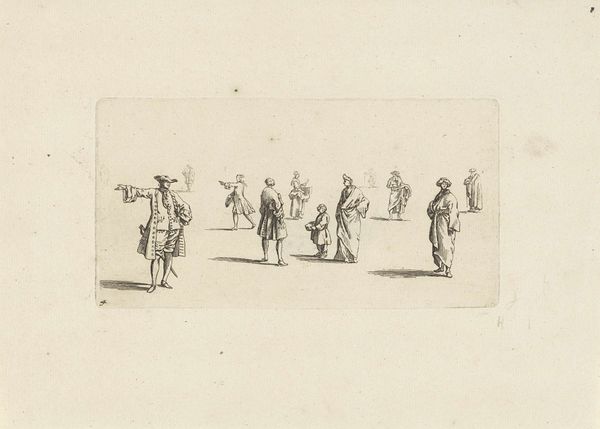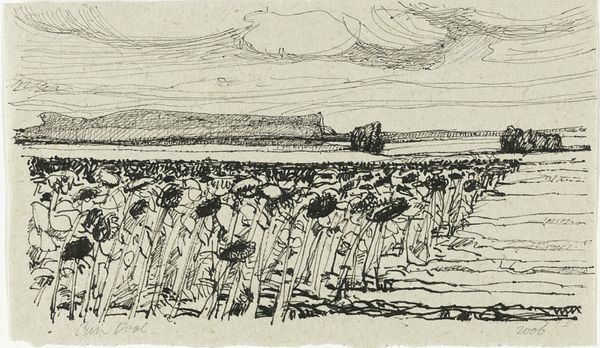
print, etching, engraving
# print
#
etching
#
figuration
#
cityscape
#
engraving
#
realism
Dimensions: Paper: 201 x 296 mm Sheet: 277 x 386 mm
Copyright: National Gallery of Art: CC0 1.0
Editor: We're looking at Robert James Malone's "Untitled (Figures Heading Toward Subway)," a print combining etching and engraving techniques from around 1940. The crowd scene and sharp shadows give it a somewhat ominous, anxious feel. What jumps out at you? Curator: The socio-political context is key here. Consider the late 1930s, early 1940s – the lingering effects of the Depression, the looming war. How might these anxieties shape the perception of a crowd, especially one heading into the relative darkness of a subway? The image itself has a definite geometry. What's interesting is how the faceless crowd relates to larger historical themes. Editor: I hadn't thought about it that way, it just felt like an anonymous group, like cogs in a machine. Curator: Exactly! The artist gives us shadows stretching long, making us feel that these figures are dwarfed not only by buildings, but also the socio-political machinery that they find themselves inside. Malone really calls out to his viewers; what role should art play in visualizing shared socio-political life, specifically urban existence, where all of those shadows begin to blur and disappear? Editor: That's really insightful! I see how the anonymity and shadows relate to those anxieties you mentioned. Is there anything about the style itself that is a comment about the city and institutions? Curator: Absolutely, consider how easily prints are disseminated, versus how challenging it is to experience a crowded city. A piece of art like this reminds of us of a question regarding public and private experiences: Who is allowed to represent and share their take on the experience? Editor: I'm walking away with a completely different view of it now. I'm appreciating not just what it depicts but its role as a historical reflection. Curator: It highlights the potency of public art. Perhaps now, it prompts us to ponder our role as spectators and citizens amidst anxieties past and present.
Comments
No comments
Be the first to comment and join the conversation on the ultimate creative platform.
